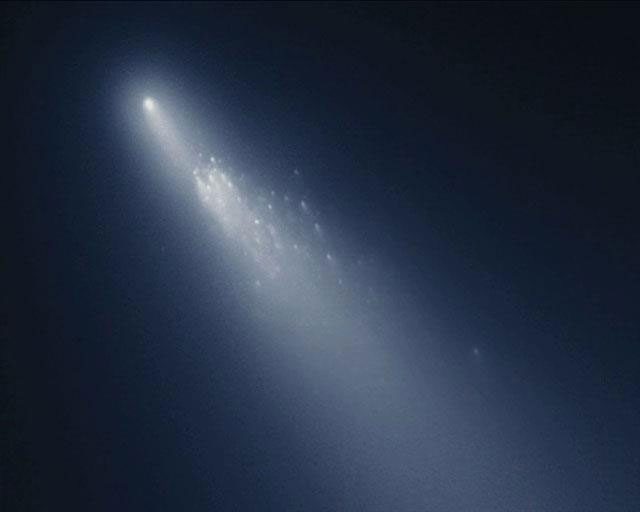Look up at the sky at the end of May, as we may be the first generation of humanity to witness the Tau Herculids – a meteor shower making its debut this year.
According to Space, the origin of the Tau Herculids is the comet 73P/Schwassmann-Wachmann 3, abbreviated as SW3, a “ghost comet” that has surprised astronomers on multiple occasions.

Rare image of SW3 during its disintegration – (Photo: ESA)
First discovered in 1930, SW3 was not visible to the naked eye for a long time. It orbits the Sun approximately once every 5.4 years and has had only a few rare close approaches to Earth over the past century.
In 1995, comet SW3 was predicted to approach Earth again. However, what appeared was no longer a ghostly and dim comet, but something extremely bright to the naked eye, shining 400 times brighter. Observations from the Southern European Observatory in La Silla, Chile, revealed that the tiny nucleus of SW3 had exploded, breaking it into four large pieces and countless fragments.
During its reappearance in 2000, two of the four fragments returned along with another piece, possibly newly formed during the journey.
This year, Earth will inadvertently pass through the cloud of debris created by SW3, which could lead to a completely new meteor shower.
This meteor shower could occur in two ways. One possibility is that it will be a super meteor shower, one of the greatest of all time. The second scenario, with a lower probability and not anticipated, is… seeing no meteors at all.
All we can do is wait. If all goes well, the super meteor shower will shine brilliantly on the night of May 30, into the early morning of May 31, possibly a day earlier or later depending on the time zone.


















































